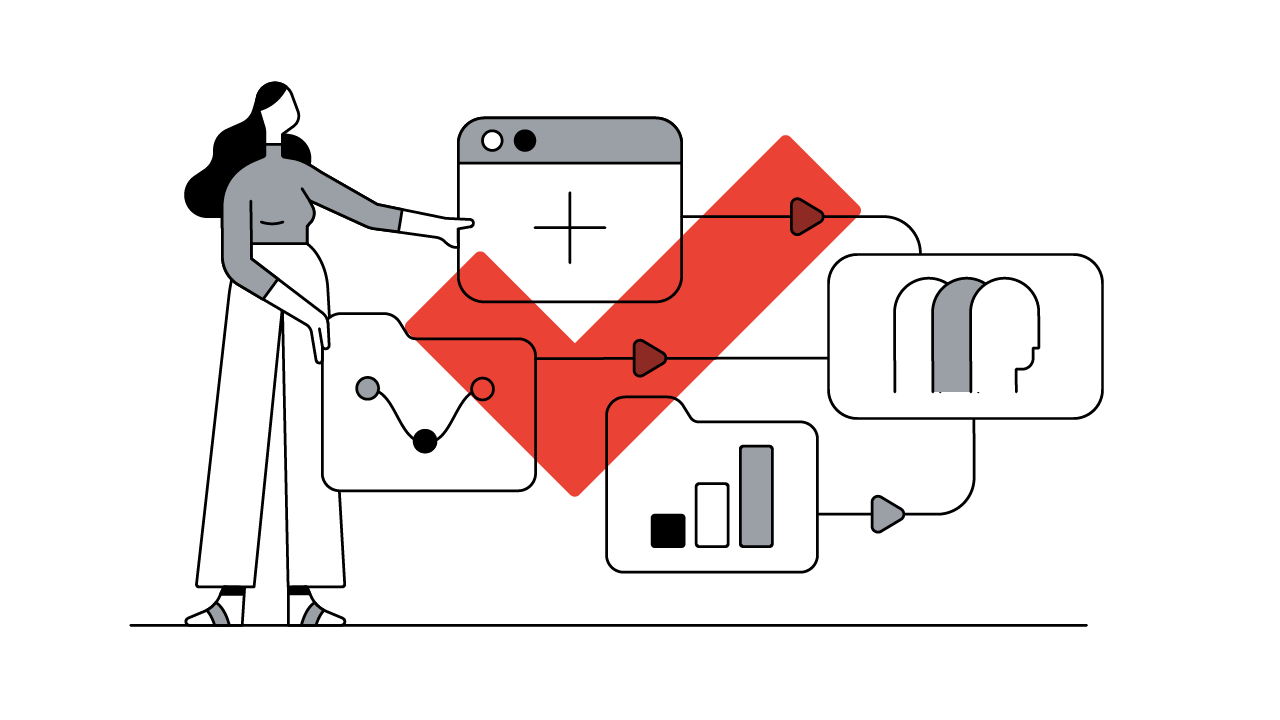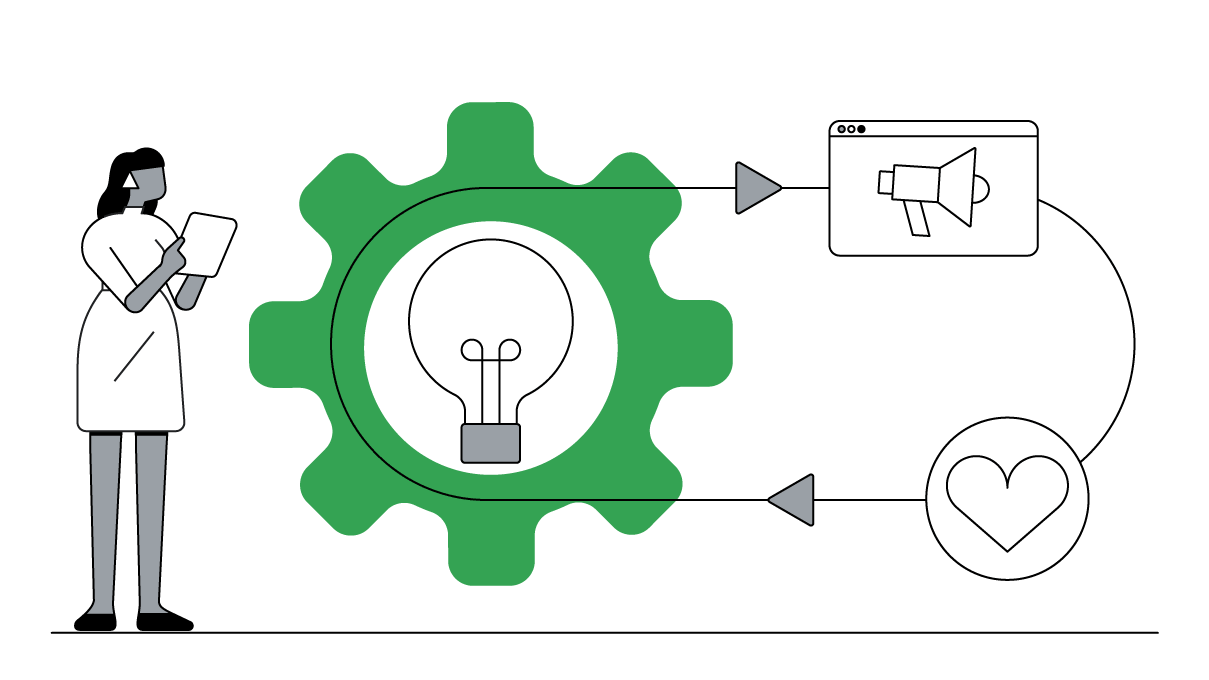Kerry O’Shea and Atikah Amalina Zaini, diversity program managers in staffing at Google, share the benefits, opportunities, and best practices they adopt to help Google discover and attract marketing talent that drives a culture of innovation.

Now that you’ve hired the right talent, what’s next?
In our first article, we explored the best practices and considerations for discovering and attracting top talent in APAC, as well as how this aids with getting the basics of diversity, equity, and inclusion right.
But, while attracting talent is one thing, the real value is how you can retain and develop the skills of your workforce. More than half of people say they will leave a company if they feel more included elsewhere, so fostering an inclusive team culture is foundational to keeping attrition rates low and employee engagement rates high.1 This means creating an environment where people feel like they can be vulnerable and take interpersonal risks (e.g., ask for help, admit mistakes, and share ideas).
Here, we explore the ways businesses can implement inclusive processes to help retain and develop talent.
Place business value on inclusivity
A significant barrier for most brands is developing the mind-set that diverse teams are a “nice-to-have” instead of a “must-have'' business imperative. Diverse teams have a direct impact on the bottom line and boost innovation, which makes it deserving of business resources, time, and leadership accountability. This is most important for ethnic minorities and LGBTQ+ employees, who value a dedicated diversity committee twice as much as people from majority groups.2
Be deliberate about ensuring diverse contributions
When YouTube launched its video upload app for iOS, between 5% and 10% of videos uploaded by users were upside-down. Were people shooting videos incorrectly? No. Our early design was the problem. It was designed for right-handed users, but phones are usually turned 180 degrees when held in the left hand. Without realizing it, we’d created an app that worked best for our almost exclusively right-handed developer team.
It makes sense that diverse teams help boost innovation and quality, but this value is only seen when everyone feels safe to challenge tried-and-true strategies — without fear of reprisal. Organizational psychologist Adam Grant explains how building psychological safety can start with managers sharing how they have benefitted from constructive criticism in the past, and identifying areas they are working to improve now. This public commitment to remain open to feedback normalizes vulnerability and makes teams more comfortable opening up about their own struggles.
Chart personal development plans
Every employee should have an opportunity for personal growth. Although the employees owns their own career development, managers can provide developmental feedback and mentorship access to senior leadership to help them grow into their career paths.
At Google, we recommend formalizing this process with a personal development plan (PDP), where employees, under managerial guidance, develop career-related knowledge and skills to help them reach their career goals. While the “what” (or outcomes) are important, we also spend time outlining the “how” to ensure longer-term growth and results. By surveying employees regularly on their engagement, including satisfaction with their career development, and by providing learning opportunities to both managers and employees, we can create a virtuous cycle that feeds career growth, job satisfaction, and productivity.
Encourage an open dialogue and a safe space for feedback
Harvard Business Review conducted a study to understand the benefits of “putting on a happy face for work.” They learned that people who feel one emotion but attempt to express another — something they call “surface acting” — are more likely to feel burned out and inauthentic, and they reported receiving less support from the people with which they worked. Surveying employees regularly to hear their point-of-view and maximizing transparency of the findings and actions the company is taking to solve for them can help limit surface acting and encourage helpful solutions.
At Google, our survey mantra is “A good survey is a lot of work; a bad survey isn’t worth doing.” It’s a big investment, but spending time crafting effective questions, avoiding common survey pitfalls, and testing your survey before sending it will bring you invaluable insights while making it clear to your workforce that you value their ideas.
Empower your employees to celebrate their success
Many years ago, we discovered that women in the engineering organization at Google, on average, were less comfortable with putting themselves forward for promotion. This set in motion a series of trainings and prompts to help women at Google feel more comfortable talking about their success. We also put greater responsibility on managers to be able to represent members of their teams who may not be as strong at representing themselves.
But this problem is not just limited to Google. Studies have shown that women are far less inclined than men to promote themselves.
Researchers have also found that people who feel uncomfortable self-promoting are likely to fall behind their more vocal peers. That is why Google launched the #IamRemarkable program, which empowers women and underrepresented groups to speak openly about their accomplishments and improve their self-promotion skills.
Consider this free training on Google Digital Workshop, which can help your workforce learn how to speak openly about their accomplishments and help others understand their strengths and skills.
Train employees and lead from the top
Be humble and understand that it’s okay to not know everything, as well as that it’s not okay to choose to remain ignorant. We need the skills and know-how to be able to interrupt and escalate less inclusive practices and continue to challenge our biases. This culture needs to start from the top. Investing in resources and support for managers, like training and accountability structures to provide direction and support, is an important first step. If you don’t want to customize your own training, you can refer to unconscious bias training resources such as Google’s Unconscious Bias @ Work video, take Microsoft’s self-paced online training, or review Facebook’s unconscious bias training.
We should also consider that people have different ways of working and communicating with each other — a consideration that comes into play when we select who will be on our teams, and who will work on the high-priority clients to gain more recognition within executive circles and global networks. Periodic workshops can help team members understand each other’s strengths and styles and also support a more inclusive culture.
This can be done through training sessions such as CliftonStrengths, Myers-Briggs, 16 Personalities, and Erin Meyer’s Culture Maps, which can help teams work effectively across different cultures, personality styles, and preferences.
Provide benefits that bring parity
Consider that different benefits might be more attractive to different people. The way you structure these benefits should be tailored to the wide range of needs and values of a diverse workforce.
For example, in a recent survey, women placed a higher value on benefits such as nursing rooms and paternity leave, whereas ethnic minorities saw diversity strategies and specific DEI teams as important benefits.
Consider subsidizing language lessons for employees who are nonnative speakers in your market and offer support for those who may need to communicate through interpreters or signers — a particularly important factor in a region with many diverse languages and cultures.
Consider how people are affected by remote work situations
When it comes to onboarding and developing a team, consider that remote working can come with its own set of challenges — such as an increased sense of isolation and mental fatigue.
For example, after growing mental health concerns and a spike in suicide rates, Japan appointed its first Minister of Loneliness in February 2021, who was tasked with focusing efforts on social welfare and tackling loneliness, as well as understanding the impact of COVID-19 on people’s well-being.3
At Google, we’ve invested in an extensive wellness program for employees, but employee wellness initiatives don’t necessarily have to cost your business more money. Take Intellect, for example, a free psychological training app for users in Southeast Asia, focused on mental health issues and forming better habits.
In some cases, remote working can also introduce new challenges to employees. For instance, meetings via video calls can cause strain to employees who might have poor internet connections, or the formats themselves could add extra layers of complexity.
For example, Wouter Thielen, who is a deaf Googler in the Japan office, must have two meeting sessions running at the same time, on two computer screens, for his work-from-home setup. One screen shows the presentation slides in the main meeting and another screen is with his interpreters.
“Most of my meetings are 1:1s, and, in these cases, we can just chat, but sometimes when there is a meeting with multiple people, we have used remote interpreting. I’ll join the main meeting, along with the interpreters, who listen into it, and then there is another Meet session between me and the interpreters only, for the sign language interpretation.”
Consider ways to keep your team connected beyond the walls of the workplace by focusing on your people first, leaning into routines to bring stability, and being deliberate about making time to lift morale when and where it’s needed. These go a long way in ensuring you keep your employees satisfied at work and retain them over the long run.







